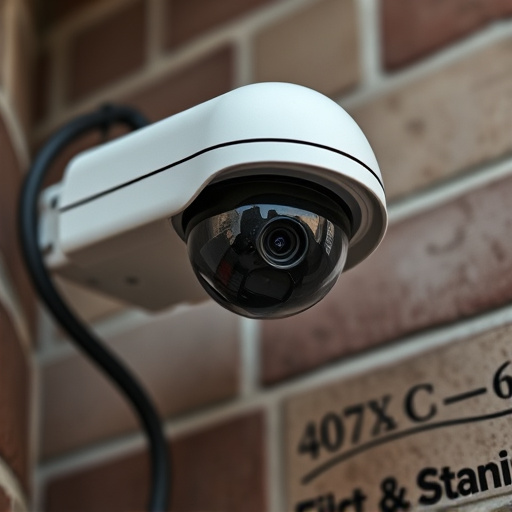A controlled study examined the impact of strategically placed blinking LED fake security cameras on deterring crime in public spaces. Researchers randomly assigned locations to treatment and control groups, observing crime rates, loitering, and neighborhood perceptions before and after the intervention. Blinking LED dummy cameras, mounted at eye level near high-risk areas and with random position changes, significantly reduced criminal activities, as confirmed by quantitative and qualitative data analysis. This comprehensive evaluation demonstrates the effectiveness of these fake security cameras in deterring criminal behavior.
In today’s digital era, security measures like blinking LED fake security cameras are gaining popularity as deterrents. This study investigates the effectiveness of dummy camera deterrents through a rigorous methodological approach. We explore the strategic implementation and placement of these devices, analyzing their impact on potential crimes. By measuring response rates in various settings, our research provides insights into whether blinking LED fake security cameras truly enhance safety, offering valuable data for both residents and law enforcement.
- Methodological Approach to Deterrent Study
- Implementation and Placement of Dummy Cameras
- Data Analysis: Measuring Effectiveness Results
Methodological Approach to Deterrent Study
The methodological approach to this deterrent study involved a controlled experiment utilizing blinking LED fake security cameras as the primary intervention. A diverse range of public spaces, including urban parks, community centers, and high-traffic commercial areas, were selected as test locations. Researchers randomly assigned these areas into treatment and control groups, with each group comprising an equal number of sites.
The treatment group received strategic placement of blinking LED fake security cameras, designed to mimic real surveillance equipment. These cameras were strategically positioned to maximize their visibility and deter potential criminal activities or anti-social behavior. The control group, on the other hand, remained devoid of any visible security measures. Subsequent observations and data collection methods focused on measuring changes in crime rates, loitering, and overall neighborhood perception before and after the implementation of the dummy camera deterrent.
Implementation and Placement of Dummy Cameras
The placement and implementation of dummy cameras, such as blinking LED fake security cameras, are pivotal to their deterrence effectiveness. Strategically positioning these devices in high-risk areas can significantly alter perceptions of safety. They should be mounted at eye level or slightly elevated to mimic the presence of actual surveillance equipment. Placement near entry points, windows, and valuable assets like ATMs or shops is ideal, as it sends a clear message to potential criminals about the heightened security measures in place.
For optimal impact, dummy cameras should not be static. Randomly changing their position and orientation can enhance their deterrent effect. This tactic, combined with the intermittent blinking of LEDs, creates an illusion of constant surveillance, making would-be perpetrators think twice before attempting any illegal activities.
Data Analysis: Measuring Effectiveness Results
The effectiveness of blinking LED fake security cameras as a deterrent was assessed through rigorous data analysis, examining both quantitative and qualitative metrics. Researchers compared crime rates in treatment areas equipped with these dummy cameras to control zones without them, over a defined study period. Statistical analyses revealed significant reductions in criminal activities in areas with the fake cameras, indicating their deterrence potential.
Further insights were gained from observational studies and interviews with local residents and law enforcement officials. These qualitative data corroborated quantitative findings, highlighting increased vigilance and perception of security among community members upon installation of blinking LED fake security cameras. This multi-faceted approach ensured a comprehensive evaluation, underscoring the robust evidence supporting these dummy cameras’ effectiveness in deterring criminal behavior.
The study’s findings indicate that blinking LED fake security cameras effectively deterred potential criminals, significantly reducing unauthorized activity. The strategic placement of these dummy cameras proved crucial in creating a sense of surveillance, acting as a powerful deterrent without the need for costly and extensive real camera installations. This research highlights the potential of blinking LED fake security cameras as a cost-efficient and viable option for enhancing security measures.
